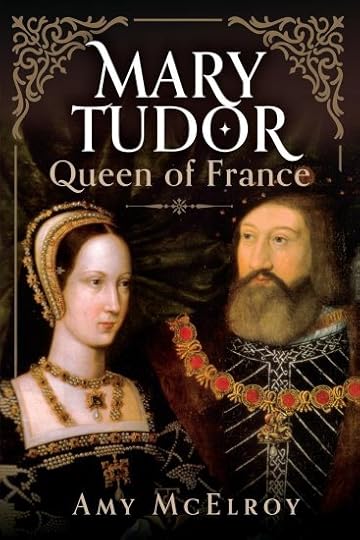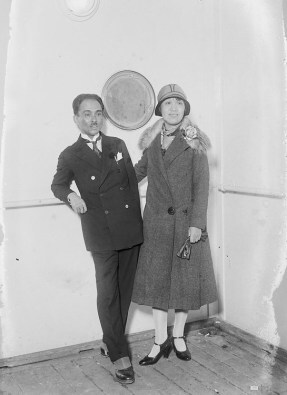Moniek Bloks's Blog, page 22
February 23, 2025
Queen Zhuang Zhi of Chu – The twelve-year old commoner who saved the King of Chu and became Queen
Queen Zhuang Zhi was the queen consort to King Qingxiang of Chu. They were different in both ages and status.[1] She was a twelve-year-old commoner.[2] King Qingxiang of Chu was in his forties.[3] Nevertheless, Queen Zhuang Zhi was known for wisdom, and she saved Chu from being invaded by a rival kingdom.[4] Through Queen Zhuang Zhi’s guidance, she was able to make Chu into a strong nation.[5]
In circa 260 B.C.E., Queen Zhuang Zhi of Chu was born.[6] She lived during the Warring States Period (which lasted from 475-221 B.C.E.).[7] During this period, the seven states of China–Qin, Chu, Zhao, Wei, Han, Yan, and Qi–declared independence from the ruling Zhou Dynasty and formed their own Dynasties.[8] The states were often in conflict with one another.[9] Queen Zhuang Zhi’s given name was Xing.[10] Zhi means “niece.”[11] Therefore, she was a niece of a man named Zhuang.[12] Zhuang Zhi was a commoner who lived in the district capital of Chu.[13] Chu was ruled by King Qingxiang (who reigned from 298-263 B.C.E.).[14]
King Qingxiang of Chu was surrounded by corrupt ministers who had been bribed by the rival state of Qin to distract the king from state affairs.[15] King Qingxiang of Chu was in his forties and had no heir.[16] He often went on pleasurable outings.[17] Chu became endangered because of his neglect of the kingdom.[18] One day, King Qingxiang of Chu’s ministers persuaded King Qingxiang of Chu to go on a pleasure trip to Tang (which was 155 miles south of the Chu capital).[19] This meant that the corrupt Chu ministers would let Qin invade Chu.[20]
Even though Zhuang Zhi was twelve years old, she learned that the Qin was planning to invade during King Qingxiang of Chu’s absence.[21] She wanted to find King Qingxiang and bring him back to the capital.[22] However, her mother forbade her from finding the king.[23] Zhuang Zhi decided to disobey her mother.[24] She ran away from home, sat down next to the road the king was travelling on, and waved the flag as he passed.[25]
King Qingxiang of Chu noticed her and allowed her to speak to him.[26] She urgently expressed the danger he was in.[27] She also warned him of the dangers of focusing on his luxurious lifestyle at the expense of the people.[28] Despite their ages and status differences, King Qingxiang was deeply impressed with Zhuang Zhi.[29] He listened to her advice.[30] He turned back to the capital with Zhuang Zhi by his side.[31] Once they arrived at the capital gates, they learned that his rebel ministers had closed it off as they waited for the Qin army to invade.[32] King Qingxiang of Chu raised an army from the provinces that were loyal to him.[33] He crushed those who rebelled against them.[34] Qin lost the opportunity to invade Chu.[35]
After King Qingxiang managed to crush the rebellion, he made Zhuang Zhi his queen.[36] Queen Zhuang Zhi helped make Chu to be a frugal nation.[37] She helped her husband attend to the well-being of the people.[38] Through Queen Zhuang Zhi’s guidance, Chu quickly became a strong nation.[39] The date and cause of Queen Zhuang Zhi’s death are unknown.[40]
Queen Zhuang Zhi initially violated Confucian principles.[41] She disobeyed her mother, ran away from home, and eloped with King Qingxiang of Chu.[42] Nevertheless, she embraced Confucian principles in the end.[43] She put her king and her kingdom before herself.[44] King Qingxiang and Queen Zhuang Zhi formed a great partnership and were very successful in establishing Chu as a powerful nation.[45] In Biographies of Eminent Women, Queen Zhuang Zhi’s biography is categorized under “Biographies of Those Able in Reasoning and Understanding.”[46]
Sources:
Chen, X. (2019). “The Ideology and Significance of the Legalists School and the School of Diplomacy in the Warring States Period.” 4th International Conference on Modern Management, Education Technology and Social Science (MMETSS 2019). Atlantis Press.
Cook, C. A. (2015). “Zhuang Zhi, Wife of King Qingxiang of Chu”. Biographical Dictionary of Chinese Women: Antiquity Through Sui, 1600 B.C.E. – 618 C.E. (L. X. H. Lee, Ed.; A. D. Stefanowska, Ed.; S. Wiles, Ed.). NY: Routledge. p. 96.
Liu, X., Kinney, A. B. (2014). Exemplary Women of Early China: The Lienü Zhuan of Liu Xiang. United Kingdom: Columbia University Press.
[1] Cook, 2015
[2] Cook, 2015
[3] Cook, 2015
[4] Cook, 2015
[5] Liu and Kinney, 2014; Cook, 2015
[6] Cook, 2015
[7] Liu and Kinney, 2014
[8] Chen, 2019
[9] Chen, 2019
[10] Liu and Kinney, 2014
[11] Cook, 2015, p. 96
[12] Cook, 2015
[13] Cook, 2015
[14] Cook, 2015
[15] Cook, 2015
[16] Cook, 2015
[17] Cook, 2015
[18] Cook, 2015
[19] Cook, 2015
[20] Cook, 2015
[21] Cook, 2015
[22] Cook, 2015
[23] Cook, 2015
[24] Cook, 2015
[25] Cook, 2015
[26] Cook, 2015
[27] Cook, 2015
[28] Cook, 2015
[29] Cook, 2015
[30] Cook, 2015
[31] Cook, 2015
[32] Cook, 2015
[33] Cook, 2015
[34] Cook, 2015
[35] Cook, 2015
[36] Cook, 2015
[37] Liu and Kinney, 2014
[38] Liu and Kinney, 2014
[39] Liu and Kinney, 2014
[40] Cook, 2015
[41] Liu and Linney, 2014
[42] Liu and Kinney, 2014
[43] Liu and Kinney, 2014
[44] Liu and Kinney, 2014
[45] Liu and Kinney, 2014
[46] Cook, 2015, p. 96
The post Queen Zhuang Zhi of Chu – The twelve-year old commoner who saved the King of Chu and became Queen appeared first on History of Royal Women.
February 22, 2025
Book News Week 9
Book News Week 9 – 24 February – 2 March 2025

The Life and Death of Mary, Queen of Scots
Hardcover – 25 February 2025 (US)

The Rebel Empresses: Elisabeth of Austria and Eugénie of France, Power and Glamour in the Struggle for Europe
Hardcover – 25 February 2025 (US)

Mary Tudor: Queen of France
Hardcover – 28 February 2025 (UK)

Queen Victoria’s Daughters-in-Law
Paperback – 28 February 2025 (UK)

Young Elizabeth: Princess. Prisoner. Queen.
Paperback – 27 February 2025 (UK)

Maria Theresa: Empress: The Making of the Austrian Enlightenment
Hardcover – 25 February 2025 (UK & US)

Plantagenet Princesses: The Daughters of Eleanor of Aquitaine and Henry II
Paperback – 28 February 2025 (UK)

The Children of Charles the Second: The Merry Monarch’s Fourteen Bastards
Hardcover – 27 February 2025 (UK)
The post Book News Week 9 appeared first on History of Royal Women.
February 21, 2025
The Thurn and Taxis Chapel at Église Notre-Dame des Victoires du Sablon in Brussels
The Église Notre-Dame des Victoires du Sablon in Brussels is the site of a burial chapel belonging to the comital and princely Thurn and Taxis family.
The church was built in the 15th century, and it suffered damage several times over the years. It was renovated in the 20th century. The chapel for the Thurn and Taxis family is dedicated to Saint Ursula.
Click to view slideshow.The women buried here are:
Alexandrine de Rye (wife of Count Leonhard II of Taxis)Anna Adelheid of Fürstenberg-Heiligenberg (wife of Eugen Alexander Franz, 1st Prince of Thurn and Taxis)Anna Franziska Eugenia of Horne (wife of Lamoral II Claudius Franz, Count of Thurn and Taxis)Sophie Christine of Brandenburg-Bayreuth (wife of Alexander Ferdinand, 3rd Prince of Thurn and Taxis)The church entry is free, but the chapel asks for a small donation.
The post The Thurn and Taxis Chapel at Église Notre-Dame des Victoires du Sablon in Brussels appeared first on History of Royal Women.
February 20, 2025
Queen Paola’s Diamond Necklace Tiara
Queen Paola of Belgium’s Diamond Necklace Tiara is, as the name suggests, a necklace that can be converted into a tiara.
Embed from Getty ImagesThe small piece is of unknown origin, and she likely received it in the early years of her marriage as a gift. It consists of two rows of diamonds, one a chain from which a row of diamonds drop and a pendant.
Embed from Getty ImagesThe future Queen Paola wore it often during her years as a Princess. When she became Queen, she often paired it with larger tiaras and wore it more as a necklace.
After her husband’s abdication, she retained this necklace.
The post Queen Paola’s Diamond Necklace Tiara appeared first on History of Royal Women.
February 18, 2025
Nobuko, Princess Fumi – The Emperor’s daughter
Princess Nobuko of Japan was born on 7 August 1891 as the daughter of Emperor Meiji of Japan and his fifth imperial concubine, Sono Sachiko. She was her father’s twelfth child and eighth daughter and her mother’s fifth child and fourth daughter. Her father’s official spouse was Empress Shōken.
Nobuko’s mother, Sono Sachiko, was the daughter of Count Sono Motosachi and although she bore the Emperor eight children, only four daughters would survive to adulthood: Masako, Fusako, Nobuko and Toshiko. Children born to concubines were treated as legitimate and could if they were male, succeed to the throne. All children born to concubines were considered children of the Empress, and their biological mother would have very little part in raising them. Sono Sachiko was hidden from public view.
At the time of Nobuko’s birth, just three of the Emperor’s many children were alive, many having died in infancy. Besides Nobuko, the other three children were Crown Prince Yoshihito and Nobuko’s full sisters, Masako and Fusako.
Empress Shōken acted as her foster mother and reportedly greeted her and her sisters only after removing her floor cushion from beneath her as a gesture of humility. The princesses would protest this, but the Empress replied, “I cannot. I came from a subject family [shinka], but Your Highnesses are His Majesty’s children by birth.” The princesses reportedly treated their birth mother as a servant and addressed her in yobisute (the calling of a person by their name without an honorific suffix).1
The Princesses were not close to their father. One of them said, “Believe it or not, I met my father on the eve of my wedding for the first time in my life. He didn’t even recognise me. He asked me who I was and where I was from!”2
On 6 May 1909, Nobuko married Prince Yasuhiko Asaka, who came from a collateral branch of the Imperial Family. Shortly before their wedding, Nobuko’s father granted him the title of Asaka and the authorisation to begin a new branch of the family. After the wedding, she was known as Princess Asaka. They went on to have two sons and two daughters together: Princess Kikuko (born 1911), Prince Takahiko (born 1912), Prince Tadahito (born 1914) and Princess Kiyoko (born 1919).
Embed from Getty ImagesHer husband was a graduate of the Army War College and between 1922 and 1924, he studied in France. While there, he was in a car accident alongside his sister-in-law Fusako and her husband Prince Naruhisa Kitashirakawa. They had gone for a drive and Prince Naruhisa Kitashirakawa insisted on driving himself, so his French chauffeur was seated in the front passenger seat. Prince Yasuhiko was in the seat with his sister-in-law and her lady-in-waiting, Elizabeth Sauvy. They were going at quite a high speed, which Prince Naruhisa Kitashirakawa pointed out. He swerved to pass another car but crashed head-on into a sycamore. The car flipped, killing both the French chauffeur and Prince Naruhisa Kitashirakawa instantly. Prince Yasuhiko, Princess Fusako and Elizabeth suffered broken bones and other wounds but survived. Princess Nobuko sailed to France to take care of her sister and husband. They would remain in France for over a year.3
 Prince and Princess Asaka in the United States in 1925 (public domain)
Prince and Princess Asaka in the United States in 1925 (public domain)On the way back to Japan, Nobuko and her husband visited the United States. In November 1925, they arrived in New York, where they joined a dinner by the Japan Society. The New York Times reported, “Both the Prince and Princess admitted a love of Western dancing, and it was learned that in midocean the Prince had asked by radio that dancing be included at the Japan Society dinner last night.”4 They also went sightseeing and the New York Times reported Nobuko’s desire for oysters and “real American food.” They also attended a performance of Fedora at the Metropolitan Opera House.5 After New York, they travelled to Washington, where her husband wanted to lay a wreath at George Washington’s tomb.6 They visited several other cities before leaving for Japan at the end of November.
During their time in Europe and the United States, Nobuko and her husband fell in love with the Art Deco movement. After their return to Japan, they began planning a new mansion in the Art Deco style in Tokyo. This mansion is currently the Tokyo Metropolitan Teien Art Museum. It was completed in May 1933, but Nobuko did not enjoy it for very long.
Princess Nobuko died on 3 November 1933 from kidney disease. She was still only 42 years old.
Her husband later became known for his role in the Nanjing Massacre. Following the Second World War, he and their children were stripped of their titles and demoted to commoner status.
The post Nobuko, Princess Fumi – The Emperor’s daughter appeared first on History of Royal Women.
February 16, 2025
Princess Zhong Zi and Princess Rong Zi -The sisters who had contrasting reputations in Chinese history
Princess Zhong Zi and Princess Rong Zi were Princesses of the State of Song.[1] They were secondary wives to Duke Ling of Qi.[2] Even though the two were sisters, they had different aspirations.[3] Princess Rong Zi was very ambitious and wanted her nephew, Prince Ya, to become the Crown Prince of Qi.[4] However, Princess Zhong Zi feared that by making Prince Ya the Crown Prince, it would lead to disastrous consequences in Qi.[5] The decisions that these sisters made would lead them to have opposing reputations in Chinese history.[6]
Princess Zhong Zi and Princess Rong Zi were born during the middle of the sixth century B.C.E.[7] They lived during the Spring and Autumn period (which lasted from 771 to 453 B.C.E).[8] During this period, Chinese states were declaring their own independence from the ruling Zhou Dynasty to form their own dynasties.[9] They were Princesses of Song (modern-day Shanxi Province).[10] Their father was the Duke of the State of Song.[11] They were from the Zi clan.[12] Princess Zhong Zi was older than Princess Rong Zi.[13]
Princess Zhong Zi and Princess Rong Zi became secondary wives of Duke Ling of Qi (which is located in modern-day Shandong Province).[14] Duke Ling of Qi (who reigned from 581-564 B.C.E.) already had a primary wife named Duchess Sheng Ji.[15] Duchess Sheng Ji already had a son named Prince Guang (the future Duke Zhuang II of Qi).[16] Princess Zhong Zi bore Duke Ling of Qi a son named Prince Ya.[17] However, Duke Ling of Qi greatly favoured Princess Rong Zi over Princess Zhong Zi.[18] Therefore, Duke Ling of Qi gave Prince Ya to Princess Rong Zhi to raise as her son.[19]
Princess Rong Zhi urged Duke Ling of Qi to make Prince Ya the Crown Prince instead of Prince Guang.[20] However, Princess Zhong Zi was against her sister’s proposal.[21] She feared it would create political turmoil within the succession.[22] Princess Zhong Zi said, “I will not allow it. I recognize the sprouting seeds of calamity that shall become a fight to the death.”[23] Duke Ling of Qi wanted to please Princess Rong Zi.[24] He ignored Princess Zhong Zi’s advice.[25] He made Prince Ya the Crown Prince.[26]
In 554 B.C.E., Duke Ling of Qi died of illness.[27] His minister, Cui Zhu, successfully established Prince Guang as Duke Zhuang II of Qi.[28] Cui Zhu and Duke Zhuang II of Qi eliminated Crown Prince Ya’s supporter, Gou Hou.[29] Then, they killed Crown Prince Ya and Princess Rong Zi.[30] There is no mention of Princess Zhong Zi’s fate.[31] Instead, she has been remembered for her intelligence.[32]
Princess Zhong Zi and Princess Rong Zi were sisters. However, they were different in aspirations.[33] Their reputations in history were also vastly different.[34] Princess Rong Zi has been portrayed as a schemer who caused political turmoil in Qi and created a succession crisis.[35] However, Princess Zhong Zi has been praised for her foresight and for giving Duke Ling of Qi good advice, which he ignored.[36] In Biographies of Eminent Women, Princess Zhong Zi’s biography is categorized under “Biographies of the Benign and Wise.”[37]
Sources:
Cook, C. A. (2015). “Zhong Zi, Wife of Duke Ling of Qi”. Biographical Dictionary of Chinese Women: Antiquity Through Sui, 1600 B.C.E. – 618 C.E. (L. X. H. Lee, Ed.; A. D. Stefanowska, Ed.; S. Wiles, Ed.). NY: Routledge. pp. 94-95.
Eno, R. (2010). 1.7. Spring and Autumn China (771-453). Indiana University, PDF.
O’Hara, A. R. (1978). The Position of Woman in Early China: According to the Hieh Nü Chuan, “The Biographies of Chinese Women”. Taiwan: Mei Ya Publications.
Liu, X., Kinney, A. B. (2014). Exemplary Women of Early China: The Lienü Zhuan of Liu Xiang. United Kingdom: Columbia University Press.
[1] Liu and Kinney, 2014
[2] Cook, 2015
[3] Liu and Kinney, 2014; Cook, 2015
[4] Liu and Kinney, 2014; Cook, 2015
[5] Liu and Kinney, 2014; Cook, 2015
[6] Liu and Kinney, 2014; Cook, 2015
[7] Cook, 2015
[8] Eno, 2010
[9] Eno, 2010
[10] Liu and Kinney, 2014
[11] Liu and Kinney, 2014
[12] Liu and Kinney, 2014
[13] Liu and Kinney, 2014
[14] Cook, 2015
[15] Cook, 2015
[16] Cook, 2015
[17] Cook, 2015
[18] Cook, 2015
[19] Cook, 2015
[20] Cook, 2015
[21] Cook, 2015
[22] Cook, 2015
[23] Cook, 2015, p. 94; O’Hara, 1978, p. 86
[24] Cook, 2015
[25] Cook, 2015
[26] Cook, 2015
[27] Liu and Kinney, 2014
[28] Liu and Kinney, 2014
[29] Liu and Kinney, 2014
[30] Liu and Kinney, 2014
[31] Cook, 2015
[32] Cook, 2015
[33] Cook, 2015
[34] Cook, 2015
[35] Liu and Kinney, 2014; Cook, 2015
[36] Cook, 2015
[37] Cook, 2015, p. 94
The post Princess Zhong Zi and Princess Rong Zi -The sisters who had contrasting reputations in Chinese history appeared first on History of Royal Women.
February 15, 2025
Book News Week 8
Book News Week 8 – 17 February – 23 February 2025

Thutmose III and Hatshepsut, Pharaohs of Egypt: Their Lives and Afterlives
Hardcover – 18 February 2025 (US & UK)

Hunting the Falcon: Henry VIII, Anne Boleyn, and the Marriage That Shook Europe
Paperback – 18 February 2025 (US)

Elite Women in Early Modern Catholic Europe (New Interdisciplinary Approaches to Early Modern Culture)
Paperback – 19 February 2025 (US & UK)
The post Book News Week 8 appeared first on History of Royal Women.
February 14, 2025
Princess Stéphanie of Windisch-Graetz’s broken grave
Princess Stéphanie of Windisch-Graetz was a descendant of the Belgian royal family and the Habsburgs.
She was born on 17 July 1939 as the daughter of Prince Franz Joseph of Windisch-Graetz and Countess Ghislaine d’Arschot Schoonhoven. Her father was a son of Archduchess Elisabeth Marie of Austria, who in turn was the daughter and only child of Rudolf, Crown Prince of Austria, and Princess Stéphanie of Belgium. She had a namesake aunt, who died in 2005.
Stéphanie herself would later say of the Belgian royals, “They are pitiful figures in a golden cage.”1
Stéphanie grew up in Kenya but moved to Vienna when she was 16 years old. She began a modelling career and later also became an artist. She married Dermot Blundell-Hollinshead-Blundell on 16 February 1967, and they had two sons in quick succession. Their marriage ended in divorce not much later. Stéphanie introduced the Cliniclows to Belgian hospitals, but it went belly up after a fraud case. Not much later, her beloved Château de Bierbais had to be sold to settle debts. She moved into an apartment in Brussels and told a reporter during one of her art exhibitions that she was basically broke. 2The Princess died following a second heart operation at the age of 79 on 12 July 2019. She was buried at the Cimetière d’Ixelles in Brussels, where her grave is now just a broken wooden cross. The white marker which once portrayed her name is now gone. Photo by Moniek Bloks
Photo by Moniek BloksThe post Princess Stéphanie of Windisch-Graetz’s broken grave appeared first on History of Royal Women.
February 13, 2025
Queen Mary’s Edwardian Tiara
Queen Mary’s Edwardian Tiara was added to her collection in 2012 after it was bought at auction.
Embed from Getty ImagesThe tiara came from the Bruun Rasmussen auction house and they described it as a “diamond jewellery set comprising a necklace and a pair of later ear screws set with numerous rose and old mine-cut diamonds, circular-cut rubies and spinels, mounted in 14k gold and silver.”1 The necklace can be converted into a tiara.
Embed from Getty ImagesMary did not wear the piece until 2015, which can probably be explained by the work that was needed to restore it.
The post Queen Mary’s Edwardian Tiara appeared first on History of Royal Women.
February 12, 2025
Book Review: The Rebel Romanov by Helen Rappaport
The Rebel Romanov by Helen Rappaport chronicles the life of Juliane or Julie of Saxe-Coburg-Saalfeld.
She was born on 23 September 1781 in Bern to Franz Frederick Anton, Duke of Saxe-Coburg-Saalfeld and Augusta Caroline Reuss of Ebersdorf. If that name rings a bell, Julie was the aunt of Queen Victoria of the United Kingdom, Prince Albert of Saxe-Coburg and Gotha, and she was thus also the sister of the future Leopold I of Belgium.
In 1795, she was chosen as a suitable bride for Catherine the Great’s second grandson, Grand Duke Konstantin. She travelled to St. Petersburg with her mother and her sisters, Sophie and Antoinette, where the trio was presented to the Grand Duke, and he was forced to make a choice. Julie was baptised in the Russian Orthodox Church and chose the name Anna Feodorovna. They were married on 26 February 1796.
Their marriage was a great mésalliance. Konstantin was violent and a true military man, and Julie was truly miserable. By 1799, the situation had become dire. Julie left Russia for medical treatment and intended not to return. However, her family was unsupportive, and she was finally forced to return to Russia. By October, she was back in Russia.
In 1801, another chance to escape presented itself. Emperor Paul I was assassinated in March, and Julie ‘became ill’. Julie returned to Coburg and now she had the consent of the new Emperor, Alexander I. She arrived back in Coburg in one piece and refused to return, and she never did. Instead, she began divorce proceedings against her husband. The divorce was denied, also due to fears that Konstantin might contract a morganatic marriage.
Nevertheless, Julie tried to live her life. In 1808, she gave birth to her first child, who was named Eduard Edgar Schmidt-Löwe. He was later ennobled by his uncle, the Duke of Saxe-Coburg and Gotha and carried the last name von Löwenfels. She had a second child in 1812. This time, it was a daughter who was named Louise Hilda Agnes d’Aubert. This time paternity was a bit more certain, it was probably Rodolpe Abraham de Schiferli, who was the chamberlain of her household. The child was adopted. Julie refused to consider an attempt at reconciliation and by 1820, Julie was finally officially granted her divorce.
The Rebel Romanov by Helen Rappaport brings Julie’s lost story back to life. From Julie’s family and background to her rising star and downfall at the Russian Court and her struggle to construct a life for herself. She was a part of one of the most famous families of the time but was rendered to the sideline because of her situation. The book was wonderfully written and very well-researched. I have always loved Helen Rappaport’s writing, and she does Julie justice.
The Rebel Romanov by Helen Rappaport is available now in the UK and will be released in the US on 15 April 2025.
The post Book Review: The Rebel Romanov by Helen Rappaport appeared first on History of Royal Women.



